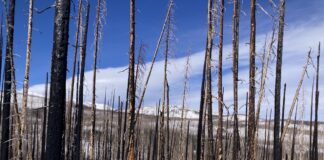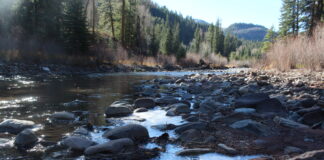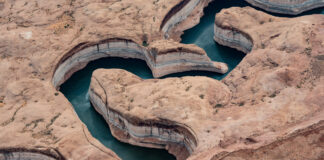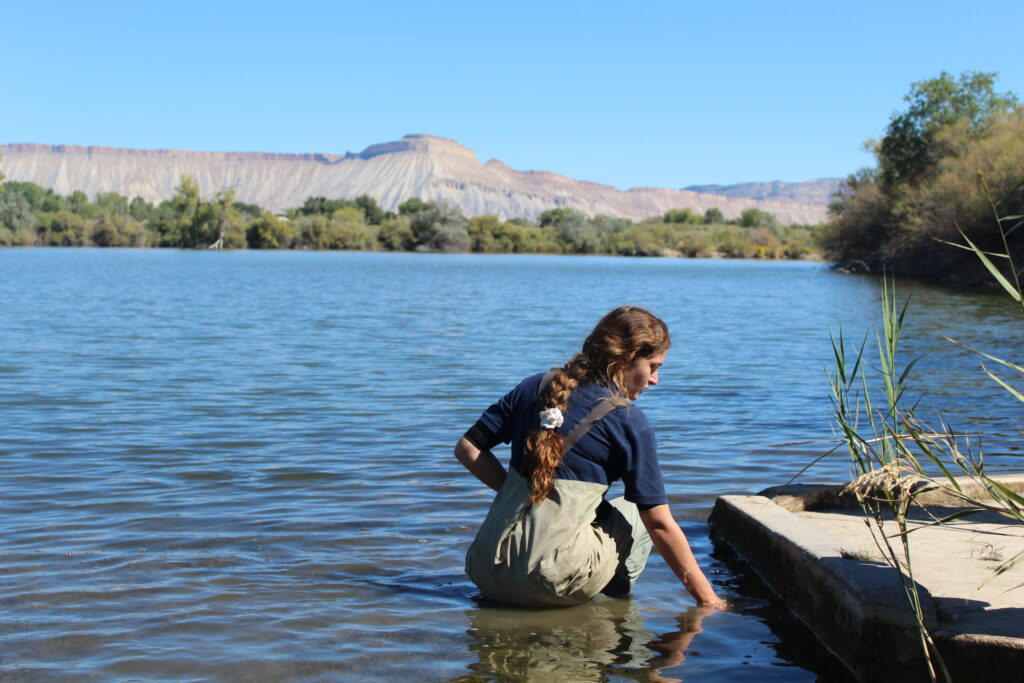
On a bluebird day at West and East Lake in Grand Junction, Maddie Baker throws a plankton tow net into the water, and drags it back to her.
“This is made of a 64 micrometer mesh, so that allows us to trap the veligers in their juvenile form, where they are microscopic and invisible to the eye,” she said.
Baker is an invasive species specialist for Colorado Parks and Wildlife. A veliger is the larval form of many kinds of mollusks, including the invasive—and pervasive—zebra mussel.
Baker doesn’t have to tow the plankton net to know the mussels are here. She picks mussel after mussel off of a concrete platform that gives anglers access to the lake. These zebra mussels are small, about the size of dimes (though they can grow bigger) and the little brown stripes that give the species their name are only just visible.
“It sucks,” she said. “It’s a very unfortunate realization for us to come to. And it shows us that this population is already well established in this body of water, if we can find adults with relative ease.”
Part of the reason water and wildlife managers hope to avoid zebra mussel infestations is how durable they are. Baker said they attach to hard surfaces using bissell threads.
“It’s organic material that they secrete from their body that forms both a physical and chemical bond with whatever hard surface they’re attaching to,” Baker said. “So this does last for their life and beyond.”
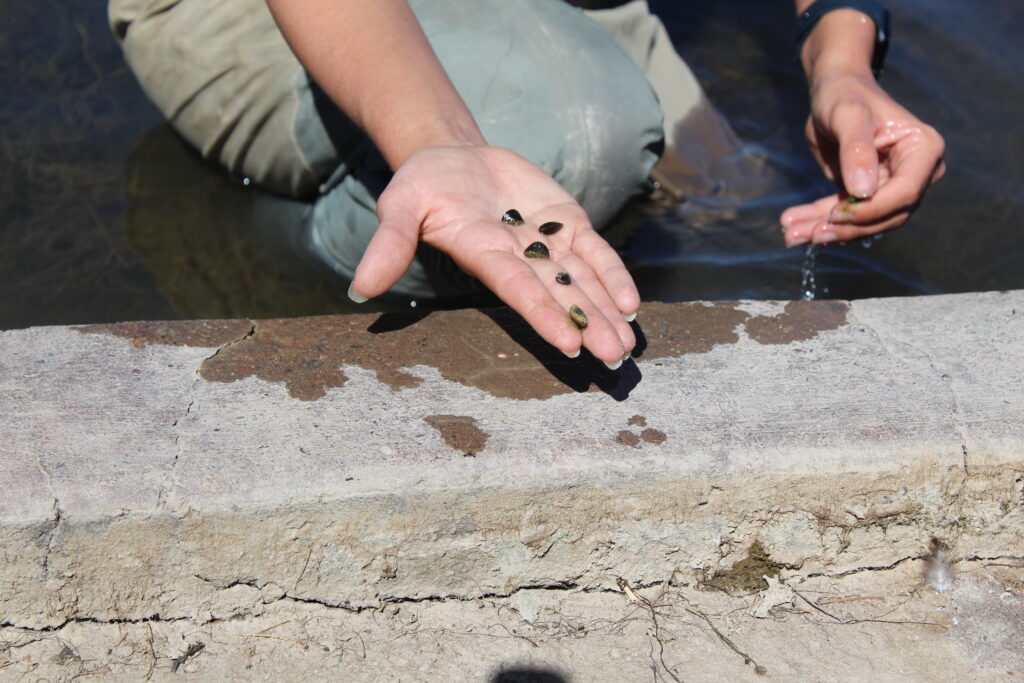
Zebra mussels are bad news for western waterways. Spread mainly by hitching rides on watercraft, the fast-reproducing mollusks clog water infrastructure, cling to marinas and docks, and outcompete native species. Colorado has taken costly measures to keep its lakes and rivers free of the mussels, but recorded the first official infestation in the state’s portion of the Colorado River this year.
Quagga mussels, zebra mussels’ close relatives, and other aquatic nuisance species, have made their presence known at reservoirs in the Colorado River Basin, like Lake Powell and Lake Mead. Lake Mead has been infested with quagga mussels since 2010, and Lake Powell was officially considered infested in 2012.
“At places like Lake Powell, where the water level fluctuates pretty often, you will see mussels that are still attached to canyon walls even after they’re already dead,” Baker said of the strength of bissell threads. “Just because those bonds are really lasting.”
Another alarming zebra mussel trait is how fast they reproduce.
“Each one of these can produce a million offspring and then each of those million offspring produces a million every single year,” Baker said, showing off a handful of zebra mussels, freshly plucked from the concrete platform.
“The notion of these attaching inside of our pipes or hydroelectric infrastructure–dams–is very concerning,” she says.
Zebra mussels originally came to North America from Eastern Europe through shipping vessels travelling in the St. Lawrence Seaway. In the Great Lakes region, they’ve wreaked havoc on water infrastructure, and caused millions of dollars in damage.
Bruce Johnson is an Aquatic Invasive Species Lieutenant with the Utah Division of Wildlife. He said prevention and education programs at popular recreation areas like Lake Powell have been crucial in keeping quagga mussels contained.
Data from Lake Powell shows just how far boaters are traveling, and therefore, how widely contaminated vessels potentially carrying the microscopic veligers can spread the invasive species, Johnson said.
“Approximately 40% of our boaters that we document at Bullfrog (Marina) are Colorado-registered watercraft,” he said. “We have a high percentage of boaters that are coming from Colorado down to Lake Powell—an infested water body—and then traveling back into Colorado.”
Back in East and West Lake in western Colorado, Morgan Hoffmann holds up a little piece of pipe that stays in the water for mussels to attach to in their juvenile stage, when they’re still too small to see with the naked eye. It’s a method to detect when a water body might be infested. Hoffmann is an Early Detection and Rapid Response specialist with the state.
“On these, we’re really targeting the settler stage of the zebra mussels,” Hoffman says. “So when we pull these out of the water, we feel the pipe and we’re looking for a sandpaper-like texture on that stage of the mussel.”
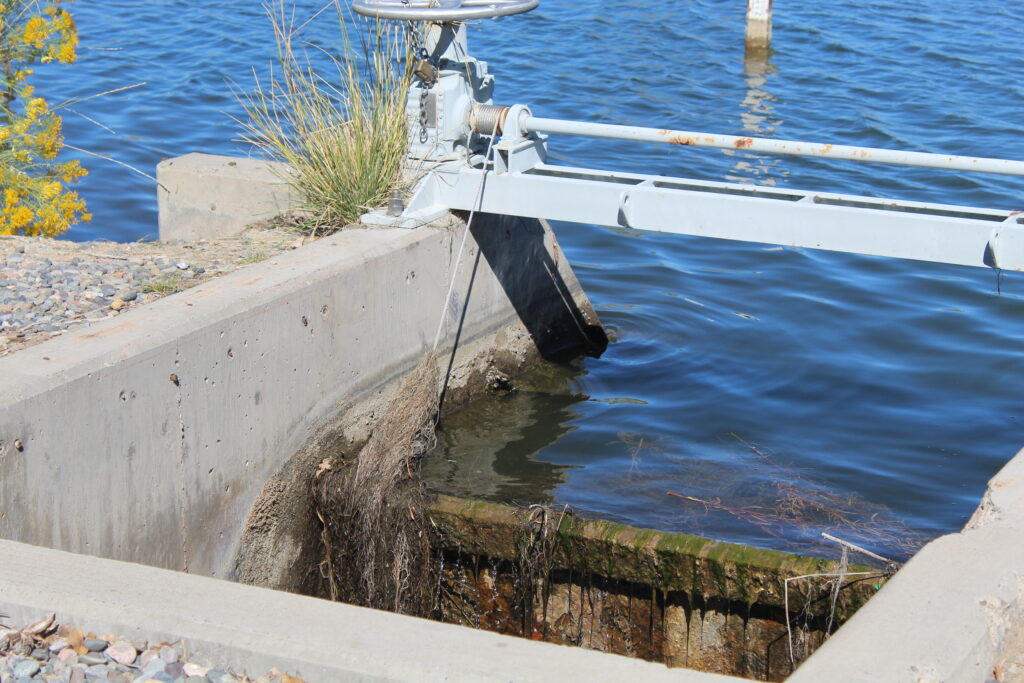
There are five bodies of water in Colorado that are officially considered “infested,” which means that the zebra mussels have established a reproducing population, with multiple life stages detected. In addition to West and East Lake, the list includes Highline Lake, Mack Mesa Lake, the Colorado River from the 32 Road bridge to the Colorado-Utah state line, and a private body of water in Eagle County.
The Colorado River is considered mussel-free from its headwaters to the confluence with the Roaring Fork River in Garfield County. Downstream of that point, until the river flows through the Grand Valley, CPW hasn’t found any adults, but they have found the veligers.
West and East Lake drains into the Colorado River, via a nearby channel. The Colorado River is already under tremendous pressure. Climate change is contributing to a historic drought, and there’s a lot of demand for water from both agriculture and growing communities throughout the Southwest.
Zebra mussels add another layer of stress to the river’s increasingly fragile aquatic ecosystems, said Rachael Gonzales, a CPW Public Information Officer.
“(Zebra mussels) also have an impact to the environment, and specifically to the water because they’re filter feeders,” she said. “So they are filtering every good nutrient that our native fish need to survive.”
It’s because of these threats that CPW is taking zebra mussels so seriously, and has increased its sampling efforts all the way to the river’s headwaters. Hoffmann oversees the program, along with the agency’s testing lab in Denver.
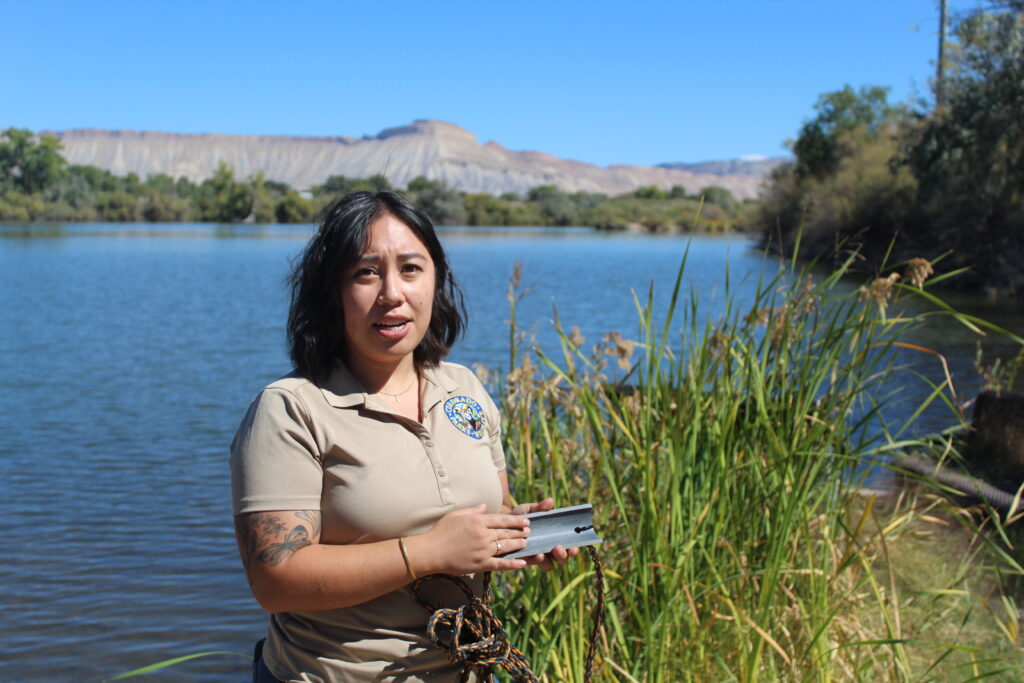
“I’m feeling confident in our program overall,” she said. “Since we found them, it’s kind of proven that our sampling and monitoring program is effective and the way we’ve designed it is working. So we’re detecting these pretty quickly, which is what we want to do.”
Robert Walters, CPW’s invasive species program manager, said that because of the severity of the threat, they’ve been able to access additional resources, including from the federal government.
“Because we are collaborating with them so regularly, we’re not only able to do what we know or are more traditional sampling technologies, but we are also able to utilize those that are out there on the cutting edge to give us the highest probability of finding these things out in the environment,” he said.
He said they worked directly with the federal Bureau of Reclamation to develop testing methods to detect zebra mussel DNA, and they worked with the U.S. Geological Survey to deploy an autonomous sampler on the Colorado River—a new piece of technology.
In 2026, Walters said, CPW has plans to install a dip tank at Highline Lake in Grand Junction to clean boats and watercraft. It allows more complicated vessels to be decontaminated without CPW staff needing to understand how the boat works.
It’s the result of ongoing regional collaboration and knowledge-sharing between Colorado and other states on how to best respond to this emerging threat. Utah has six such tanks, the first installed at Lake Powell in 2021.
Bruce Johnson, with the Utah Division of Wildlife, said there are three more on the way, in addition to the one in Colorado.
“We’re the only ones in the world to build dip tanks for decontamination,” he said.
Johnson said that sharing knowledge is critical for big projects like the dip tanks, but regional leaders are in frequent communication about day-to-day operations when it comes to preventing the spread of aquatic invasive species.
“Talking about new developments, boater contacts, information, biological advances, options for conducting inspections on those watercraft and any issues that we’re having with their different registered boaters,” he listed.
Johnson said that he regularly talks with regional partners in Colorado, Arizona, Idaho, Nevada, and Wyoming, along with federal partners like the U.S. Fish and Wildlife Service, the National Park Service, and the Bureau of Reclamation.
“That’s the beauty of the program, and why we’re so strong, and why we have held new discoveries, detections, and infestations to such a limited number here in the Western U.S. is because of that,” he said.
And it goes beyond just data and knowledge.
“We’ll actually coordinate our funding efforts,” Johnson said. “If there’s a new grant or funds that come into play, we’ll discuss our options and decide, ‘Okay, does this better fit Colorado? Is Colorado a better option to take a higher percentage of these funds?’ And Utah, we’ll take less funds because we know they can put it to better use than we can. And so we don’t fight over that.”
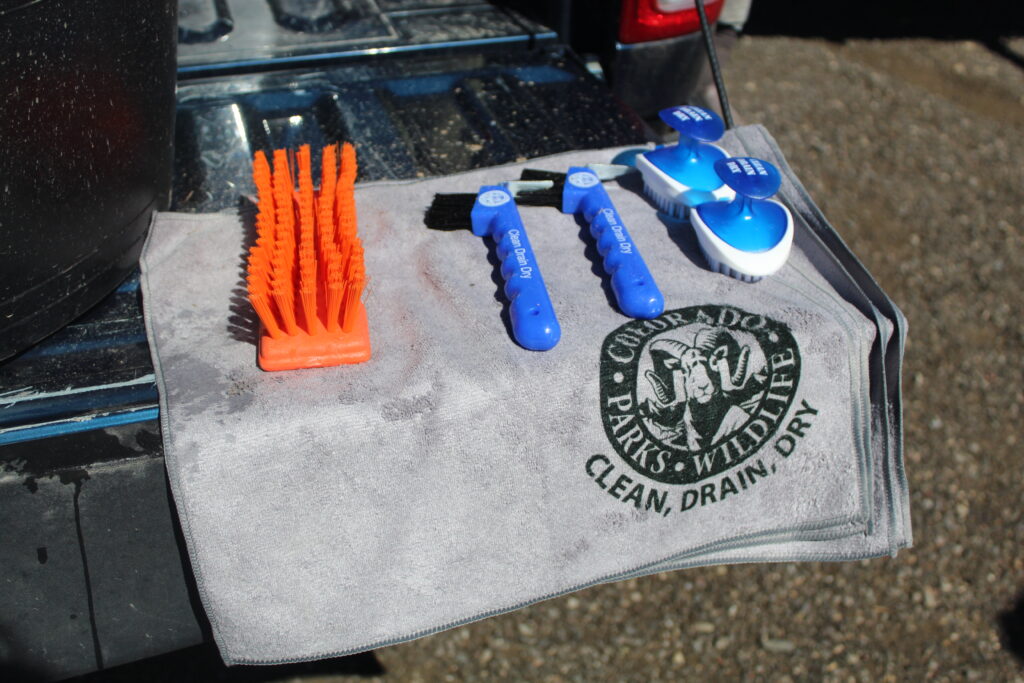
But Gonzales, the CPW spokesperson, wants to emphasize that it’s not just professionals out in the field that can make a difference. Zebra mussels spread from one body of water to another primarily through people recreating on the state’s waterways.
“We see a lot of fall fishing, we also see waterfowl hunting,” Gonzales said. “Taking a couple extra minutes when you’re done and cleaning your waders is going to go a long way to protect our bodies of water.”
The more the public can help with the risks, Gonzales says the better they can protect Colorado’s infrastructure, its native species, and a way of life that depends on healthy waters.
CPW lists gear-cleaning station locations across the state on its website, and the agency is asking the public to report any potential sightings of zebra mussels in local bodies of water.
Copyright 2025 Rocky Mountain Community Radio. This story was shared via Rocky Mountain Community Radio, a network of public media stations in Colorado, Wyoming, Utah, and New Mexico, including Aspen Public Radio. It was produced in partnership with The Water Desk at the University of Colorado Boulder.



